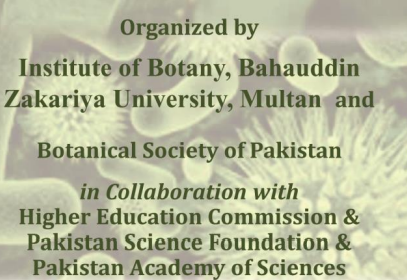PJB-2018-207
Chemical composition, ruminal degradation kinetics and methane production (in vitro) potential of local and exotic grass species grown in Peshawar
Nazir Ahmad Khan, Sadeeq Ur Rahman and John W Cone
Abstract
Livestock production, and small scale and extensive grazing livestock production systems in Pakistan lack long-term sustainability due to declining quantity and quality of green forages and pastures. Information on the nutritional value of range/pasture and cultivated grass species is required to design proper strategies not only for nutritional management of grazing animals, but also for development of good quality forage resources. Therefore, the current study was planned to: (i) analyze the chemical profile of traditional and novel grasses grown in Peshawar; (ii) quantify the methane emission potential of the grass species; and (iii) quantify the differences among species in their nutritive value and methane emission. Ten grass species, namely, Sudex (Sorghum × sudangrass), Jumbo grass (Sorghum bicolour× Sorghum sudanefe), Sorghum almum, Pennisetum purpureum, Vetiveria zizanioides, Panicum colaratum, Cynodon dactylon, Bothriochloa pertusa, Splenda setaria and Desmostachya bipinnata were evaluated under uniform agronomic and environmental conditions. The results showed that the contents of all measured chemical components, mineral profile (except Zn), In vitro digestibility of dry matter (DMD), and In vitro gas (GP) and methane-production had large variation among the grass species. Among the grasses, Jumbo grass had greater CP (11.9% DM) content and In vitro DMD (65.9% DM), and produced greater amount of total gas, that contained lowest proportion of methane. In contrast, D. bipinnata had lowest contents of CP (6.3% DM) and In vitro DMD (43.7% DM), and produced lower amount of total gas, with highest proportion methane in total GP. Next to D. bipinnata, V. zizanioides had lower degradability/GP and highest proportion of methane in total gas. The large variation in chemical composition, DMD and methane-emission potential of the summer grass species presents a prospect to select and further develop grass species that have lower methane-emission potential and high nutritional value. Further research is needed to investigate the changes in chemical profile, DMD and methane-emission of forage species between seasons and with maturity
To Cite this article:
Khan, N.A., S.U. Rahman and J.W. Cone. 2020. Chemical composition, ruminal degradation kinetics and methane production (in vitro) potential of local and exotic grass species grown in Peshawar. Pak. J. Bot., 52(1): DOI: http://dx.doi.org/10.30848/PJB2020-1(9)
Download PDF


